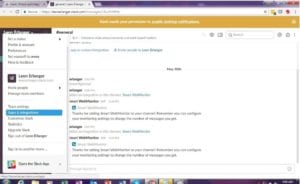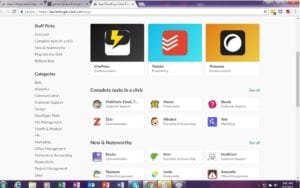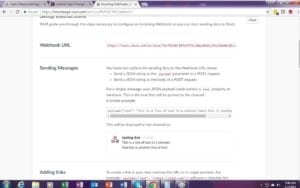Slack's ability to integrate with other applications and services makes it a great choice for IT teams to support their network monitoring needs.
Slack is one of those transforming applications that adds productive hours to the workday by consolidating all those team communication and collaboration channels—email, instant messaging, Skype, file sharing, even Web conferencing etc.-- into one smooth running interface and collaboration tool. Team members can stay on track and collaborate instantly from just about anywhere, any time on just about any device without having to waste time checking across all these different channels separately.
One of the beauties of Slack is its ability to integrate with other applications and functions, including not only email, file sharing Google Apps and others but, believe it or not, network monitoring. Integration is surprisingly easy and can be accomplished via Incoming Webhooks or bots, allowing network monitoring notifications to be piped in or accessed from operations team chat rooms and other channels.
Integrate Notifications
Incoming Webhooks provide an easy way to post messages from external sources to Slack channels using HTTP requests with a JSON payload. By posting network monitoring notifications and data into Slack, not only can relevant team members see and track them easily, they can collaborate instantly from anywhere through a Slack chat room and make quick decisions on how to respond. Just about everything in Slack is searchable as well, so if you need to you can go back to a notification and relevant discussion at just about any time.
One of the easiest ways to integrate other applications and data into Slack is simply to click Apps and Integrations under the Slack Options (Down Arrow) menu, which displays a screen showing a catalog of services that you can choose from.
The number of tools listed in the service catalog is quite large and includes several categories. You won’t necessarily find any of the of the market leading network monitoring names listed there, but you’ll find some application, cloud and infrastructure tools under the Analytics and Security and Compliance categories including New Relic, Sysdig, Atatus, Smart WebMonitor, and Pulseway. Click on one of the services listed and Slack shows you a description of what the tool and its integration can do.
All you have to do is click on Add-to-Slack button or Visit Site to Install Link in the description and the integration begins. The link often redirects you to a page on the vendor Web site for configuring Slack integration.
For example, the Pulseway link directs you to the page on its Website with simple Slack integration instructions.
You simply log into the Pulseway HTML application, select Slack from the Integrations menu, select a Slack channel to post notifications to, click Authorize. You can customize the type of notification you receive on the Slack channel using the Pulseway notification filter, with choices such as Low, Normal, Critical, and Elevated. Most of the other network monitoring tools provide similar filters.
Other monitoring tools, including market leaders such as Appnetta also offer Slack notifications but are not listed in the Slack catalog.
Slack Integrations also has a Make Your Own choice as well. You simply click on the Build Button at the top of the Catalog page, then Incoming Webhooks and again in the Incoming Help page, which takes you to the Incoming Webhooks screen.
Select the channel you want to send notifications to, then click Add Incoming Webhooks Integration. Once it assigns a Webhook URL you can configure your network monitoring app to send notifications to your team chatroom using the URL.
You can also use Slack to broadcast news and information to the rest of your organization staff regarding server downtime and other network events affecting user productivity. You can simply use the @everyone mention to broadcast information across #general team-wide channels.
Bots
Bots are a second integration tool that team members converse with as if they were members. These can be configured to respond to commands typed into Slack to pull up data from your network monitoring tools or even send information to them. This Sysdig blog shows how to use SysdigBot to post events to Sysdig Cloud. Server Density built a bot for accessing key information, including performance graphs, from the monitoring tool from within Slack.
The result, yet more productive time in your day that you might have spent checking emails or your network monitoring screen and chasing various team members to respond.






